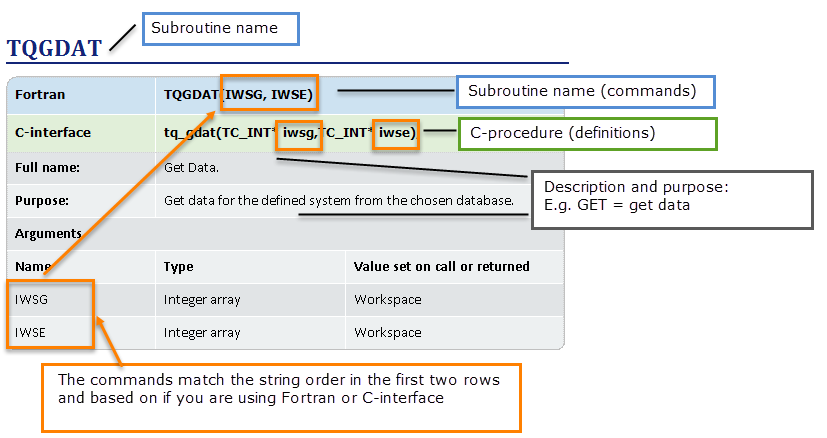TQGCOM
| Fortran |
TQGCOM(NCOM, NAMES, IWSG, IWSE) |
|
|---|---|---|
| C-interface |
tq_gcom(TC_INT* num,tc_components_strings* components,TC_INT* iwsg,TC_INT* iwse); |
|
|
Full name: |
Get System Component. |
|
|
Purpose: |
Get components of a system |
|
|
Comments: |
The number of components are returned in NCOM and their names are returned in NAMES. They are returned in an internal sequential order of the TQ-Interface. In other subroutines one must in some cases use the index of a component rather than the name. |
|
|
Arguments |
||
|
Name |
Type |
Value set on call or returned |
|
NCOM |
Integer |
Return the current number of components. |
|
NAMES |
Character*24 array |
Return the current names of components. |
|
IWSG |
Integer array |
Workspace |
|
IWSE |
Integer array |
Workspace |
Note the following conventions to distinguish between the programming languages.
- Routines starting with TQXXX, for example, TQGDAT, are in the Fortran interface
- Routines starting with tq_xxxx, for example tq_gdat, are in the C-interface.
- In Fortran, all routines are subroutines and do not return any values except where explicitly declared as functions.
- All the C procedures are declared as void and do not return any values except where explicitly otherwise declared.
An example of how to read the subroutine definitions.
